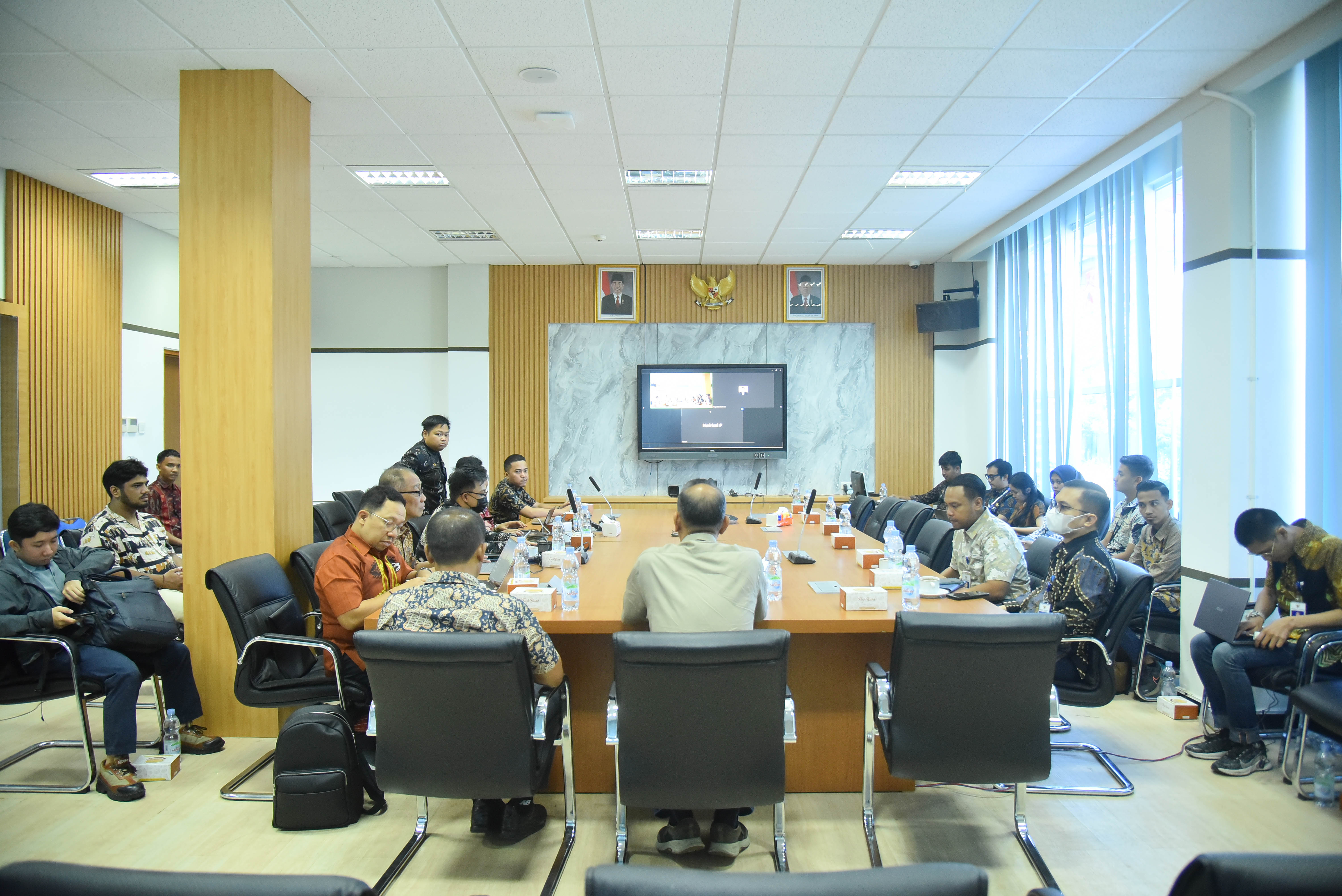Academics from Universitas Gadjah Mada and the Infrastructure Directorate of the Ministry of Transportation Encourage BPKARSS To Speed Up Asset Liquidation

Palembang - Academics from Universitas Gadjah Mada (UGM) and the Directorate of Infrastructure of the Ministry of Transportation (Dirpras Kemenhub) are encouraging the South Sumatra Light Rail Transit Management Centre (BPKARSS), as the manager of the South Sumatra Light Rail Transit (LRT), to accelerate the completion of asset management, especially to increase non-ticket or non-core revenue. This step is considered important to make the South Sumatra LRT a more independent and financially sustainable entity.
The meeting between academics, the Infrastructure Directorate of the Ministry of Transportation, and BPKARSS was held as part of a strategic discussion on the management of South Sumatra LRT's assets. The meeting discussed the great potential that can be gained by utilising non-core assets such as land, commercial space, and various potential business partnerships with private parties.

The importance of optimising non-core assets
The South Sumatra LRT, which has been in operation since 2018, serves as one of the main public transport infrastructures in Palembang and its surrounding areas. However, the operation of the LRT relies heavily on revenue from passenger ticket sales, which is considered insufficient to support maximum operational sustainability. Therefore, non-core revenues, which include all revenues from activities other than the main passenger transport service, such as commercial space rental, advertising management, business partnership cooperation, and other asset utilisation, are an important focus for improving the financial performance of the South Sumatra LRT.
UGM academic Dr Fahmi emphasised in the discussion that the non-core assets of South Sumatra LRT have great potential that has not been maximised. South Sumatra LRT has many assets, including land around stations and commercial space, as well as opportunities to develop facilities that can support operations, such as parking and office space. If managed well, these assets can be a significant source of revenue to support the sustainability of LRT operations,' he explained.
He added that optimising these assets could bring benefits not only to the LRT operator but also to the surrounding communities, who will have better access to additional facilities. According to him, a clear and timely conclusion to asset management is needed so that commercialisation steps can be taken more quickly and measurably.
In addition to academics, the Infrastructure Directorate of the Ministry of Transportation has also expressed its views on the importance of accelerating the completion of the asset management of the South Sumatra LRT. Catur Wicaksono, head of the Sub-Directorate for Lines and Buildings in Region II, stressed the need for LRT managers to immediately complete the legality and status of their assets to facilitate future commercialisation steps. Completing the legal aspects and status of the assets is an important foundation for developing the commercial potential of these assets," he said.
According to him, the Ministry of Transportation also fully supports any steps taken by the South Sumatra LRT management to increase revenue from non-core sources. He mentioned that non-core revenue potential could come from various areas, including business cooperation with the private sector, leasing commercial space at LRT stations, and using land around the LRT line for property development or public facilities. In addition, the management of advertising in and around LRT stations could also be a significant source of revenue.
An asset with high potential for commercialisation is the land around LRT stations. Many LRT stations in South Sumatra are located in strategic locations, such as congested centres and areas of high economic activity. This potential can be used to develop shopping malls, office space or public service centres, all of which can generate additional revenue for LRT operators. In addition, LRT stations in South Sumatra can also develop commercial spaces within the station area itself, such as food outlets, retail shops, or service kiosks.
Advertising management is also one of the potential areas to be developed. Advertising space on LRT trains, in stations, and along the LRT route can be a significant source of revenue. Many companies are interested in advertising in strategic locations, such as public transport, because of its wide passenger reach and high footfall.
To accelerate the pace of asset commercialisation, the South Sumatra LRT manager also needs to involve the local government. The support of the local government is needed to ensure that all approvals and regulations related to the use of the assets can be completed quickly and efficiently. Local governments can also play a role in identifying the needs of communities around LRT stations so that LRT managers can tailor the development of commercial facilities to local needs.
Meanwhile, BPKARSS manager Rode Paulus says he has made several efforts to manage the asset. These include advertising and renting out space in the station. It's just that we can't maximise it because our daily passenger numbers are still around 12,000. Third parties are not interested," he adds.
That is why cooperation between BPKARSS units is necessary. The Business Development Unit, as the spearhead of revenue generation, needs to find a way to develop public interest in opening tenants, outlets, or businesses on the South Sumatra LRT.
Meanwhile, the Facilities and Infrastructure Utilisation Section also needs to develop services that will attract people to use the South Sumatra LRT as a daily mode of transport. If the number of passengers increases, people will automatically have more confidence to open tenants, shops or businesses on the LRT. We will continue to encourage this,' he said.
If managed well, the development of non-core assets will help South Sumatra LRT achieve operational sustainability and play a greater role in supporting mobility and economic development in South Sumatra.



Komentar
LOGIN FOR COMMENT Sign in with Google